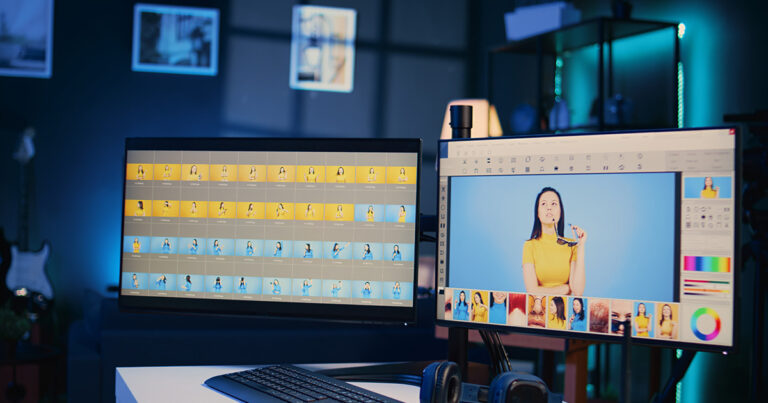Today, customers can be loyal to your brand without ever having even walked into a store or having talked to anyone within your business. How is this even possible? Why should they be loyal to your brand? What’s causing them to walk away from one business in favor of another? What are you doing to make them feel welcome so that they will continue to use your services?
“The Ghost of Customer Loyalty Past”: How Companies Used to Attract and Keep Clients
According to a study by KISSmetrics, it costs 7 times more to acquire a new customer than to retain an existing one. In the past, customer retention was not exactly a known concept as it wasn’t needed very much. The cost of retaining a customer was not even part of the equation. Churn, for the most part, didn’t exist. If a customer was already working with a provider, why would they change? Customers were not as easily wooed by promotions or discounted services from other providers. Services offered by various providers were essentially the same, so there was no incentive to make a switch.
In fact, when it came to utility companies like those that provide electricity or gas, it didn’t make sense for customers to change providers because the bureaucracy, paperwork, hassle and monetary penalties incurred when doing so were simply too great. There may have been other great deals out there, but customers just couldn’t be bothered to leave the “warmth” and comfort of the provider they knew rather than facing a new service providers who didn’t know their name. Here’s what we mean by “warmth”. At one time, customers were loyal to their local product or service provider because they were known by name. You physically walked into your local bank and the clerk behind the counter knew who you were and what you required. The interaction was friendly and personal.
For instance, as a child, the woman who used to work at our local bank knew what flavor of lollipop I enjoyed and made sure that her desk was fully stocked when we, or another family with an impatient child, walked into the bank. Businesses were not just businesses. They were communities where everyone knew each other. The point here it that service providers of the past knew their customers by name and really catered to their needs, just like a “mom and pop” type of store. So what’s happened? Why are customers no longer feeling welcomed by their service providers? Why are they “abandoning ship”?
The Era of Automation: Reaching Out to Clients in the Digital Age- and Why You Need To
In today’s digitalized world, customers find it much easier to switch from one service provider to another. Services are more easily provisioned and to make the switch doesn’t even require any paperwork or a visit to the company’s premises. Many individuals will just delete the app of one service provider and download the app of another to make the change or to take advantage of a better offer. In line with this is the service provider’s need to save time and money by virtualizing services. Companies strive to reduce costs while still providing a high level of convenience for their customers. There is an increasingly popular trend toward moving services onto a virtual platform in order to accomplish this.
Processes are simplified, but as a result, not as many person-to-person interactions are needed for transactions to be completed. In fact, it seems customers prefer this way of doing business too. In a recent study put together by analyst firm CEB TowerGroup, researchers estimated that in 2012, 75% of US banking transactions were made via digital channels. By 2016, that number is expected to rise to 84%. Today, online bank transactions are more than double that of branch activity. Customers clearly prefer the ease of banking from home. As a result of these changes related to automation, in-person interaction has been considerably diminished and companies’ treatment of customers has suffered – becoming clinical and impersonal, rather than warm and friendly.
The other issue companies face is that today’s consumer is smart and fickle, and has no problem jumping to the competition in order to benefit from introductory offers or cheaper prices. Customers prefer to do business from the comfort of their home or mobile device. They don’t feel connected or loyal to a particular brand or service provider in most cases. How can you build this loyalty and trust and again and why is this a problem?
Should You “Let ‘Em Walk”?
Before the days of “digital interactions” if a client really wanted to change providers, many companies would have just let them walk out the door. At the time, it didn’t seem worth it to chase the customer. It made more sense to work on creating new business. Yet as we said earlier, it takes more effort to get new customers than to retain those that you already have. Current research like that carried out around the 80-20 Rule shows companies are not going to want to let customers walk away in the digital age, even if there is less personal interaction. This rule dictates that 20% of customers drive 80% of revenue, which means that if your company loses *that* 20% of your clientele, you may be facing tremendous loss by way of customer churn. This is the issue that should be keeping marketing and client relations teams up at night in the digital age, if it isn’t already.
So What Does this Mean for the Future
Digital platforms and automation systems are great for clients as they keep things simple and easy and they seem to be preferred by many customers. They also save companies time and money. However, the lack of personal interaction which is experienced as a result of these systems is contributing to a decrease in customer loyalty and is therefore leading to an increase in customer churn. It seems to be much easier for a client to walk away from a brand or take advantage of another service provider’s seemingly better offer if they feel that they are being left behind or simply don’t have a strong connection with their current provider.
What’s Being Done to Make the Digital Age a more Personal One?
In the digital age, reducing churn and retaining customers is one of the most difficult tasks for client relations and marketing teams. Customer relations teams today have to be able to make the customer feel a personal connection and inspire loyalty through digital media since in-person interactions are now fewer in number. While the digital age offers the customer a higher level of accessibility, digital platforms are relatively cold and impersonal. While many companies realize that there is a need to grow and maintain personal relationships with their customers, many do not know exactly how to go about this in a meaningful way.
In a recent report put together by Ecoconsultancy, 72% of companies responded saying that they didn’t understand how to carry out personalization. The goal for moving forward is for brands to use techniques and tools within the framework of the current “digital” system to reach out to customers on their terms. By maintaining these personal connections and striving to cater directly to each individual customer, there’s a better chance of reducing churn and creating new business.





